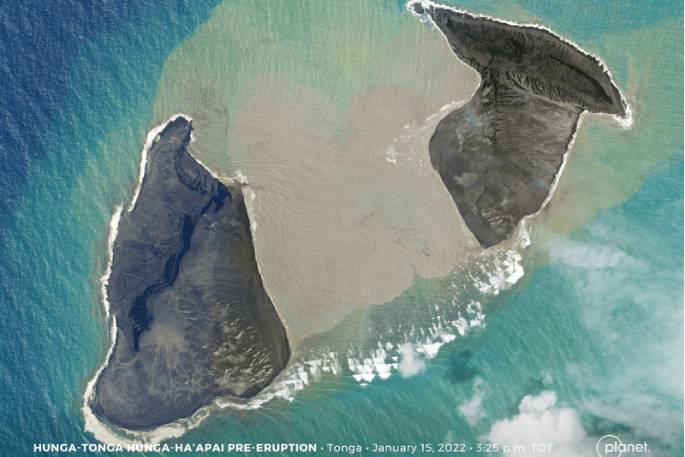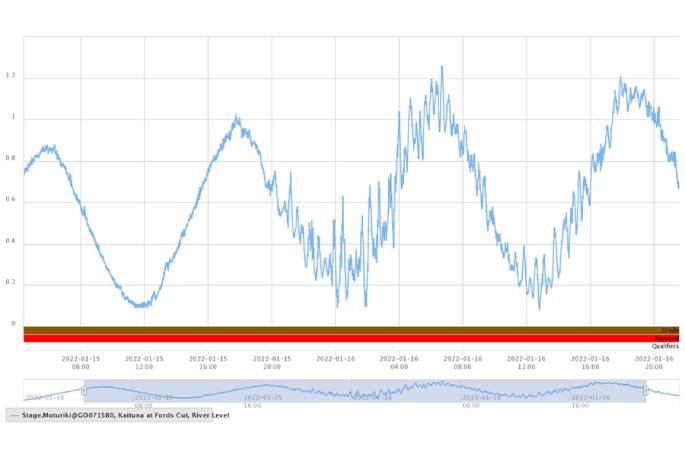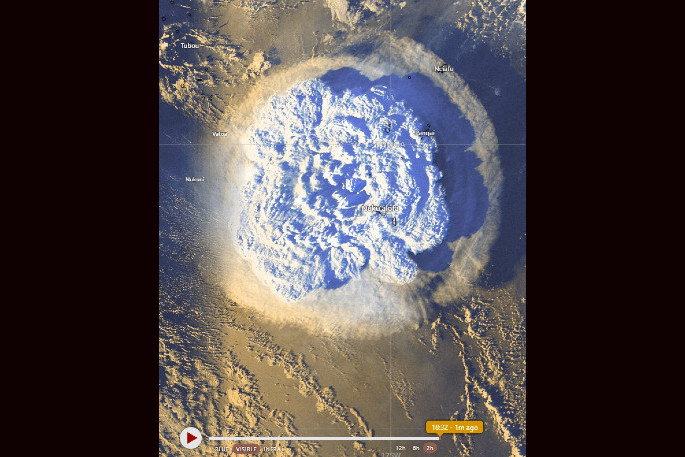Bay of Plenty Regional Council says residents could have found themselves in trouble in the region's waterways, following the recent volcanic eruption in Tonga, had tsunami activity happened at a different time.
Monitoring sites operated by Bay of Plenty Regional Council recorded evidence of tsunami waves in the region and also pinpointed the precise time the eruption's shockwave, felt as far away as Iceland, hit Tauranga Harbour.
The Hunga Tonga-Hunga Ha'apai underwater volcano erupted violently on Saturday, January 15. The event sparked warnings from the National Emergency Management Agency to avoid beaches and shores due to the potential for strong and unusual currents and unpredictable surges.
The death toll from the volcano currently stands at three and there is widespread damage to buildings, infrastructure and agriculture across the Pacific nation.
Data observed by BOPRC highlights exactly why that advice was needed, with tsunami waves present in the harbour from 9.20pm. The waves peaked from 1am to 2am on Sunday morning.

Photo. Geonet.
The monitoring site at Ford's Cut on the Kaituna River recorded a large 650mm change of water level in the river between 4.38am and 4.59am on Sunday morning.
BOPRC data services manager Glenn Ellery says this evidence highlights why emergency advice should be heeded. He believes the velocity of water and the strong current could have caused problems at a different time of day.
'This data shows why it is so important to heed advice from Civil Defence during events such as this,” said Mr Ellery.
'Strong and unusual currents and unpredictable surges around our coastlines and river mouths can occur in response to natural events and may not always be easily seen to the eye.
'While we had peak tsunami waves occur early in the morning in this case, when it is unlikely people will be near or in the water, had it occurred at another time we could have swimmers and fishermen easily get into trouble.” A chart showing tsunami wave action from the eruption of the Hunga-Tonga-Hunga-Ha'apai volcano near Tonga at Ford's Cut on the Kaituna River. BOPRC. Supplied.
A chart showing tsunami wave action from the eruption of the Hunga-Tonga-Hunga-Ha'apai volcano near Tonga at Ford's Cut on the Kaituna River. BOPRC. Supplied.
Monitoring sites also picked up the exact time the shockwave from the Tongan eruption hit Tauranga Harbour.
Numerous residents detailed hearing a bang or boom Saturday evening, hours after the eruption occurred at some point between 5.20pm and 5.28pm NZT.
BOPRC's monitoring site at Ōmokoroa Wharf showed a distinct spike in atmospheric pressure from 7.15pm to 8pm as the shockwave from the eruption passed through the area.
It should come as no surprise the shockwave was felt so keenly across New Zealand.
GNS Science duty volcanologist Steve Sherburn says the eruption ejected as much volcanic material as the 1980 Mount St Helens eruption. The shockwave, he says, continues to circle the globe and has been detected as far away as Iceland.
'Audible booming could be heard from New Zealand to the south and Alaska to the north,” says Steve.
'This was due to the low-frequency bass-like booms produced during the eruption that can travel thousands of kilometres away from the source. This eruption now holds the world record for being ‘heard' so far from the volcano.”
As for the resultant tsunami. Steve says it is the first of its kind since the Krakatau eruption of 1883.
'The eruption was rare in that it caused tsunami waves large enough to impact thousands of kilometres away from the volcano,” Steve explains.
'There are several mechanisms scientists believe could have contributed to generating tsunami waves: the huge explosion through the ocean, the shockwave that pushed out as it travelled, the effect of the collapsing eruption column onto the ocean, and a possible caldera collapse of the volcano itself underwater.”
Steve says GNS expect the volcano will remain active for weeks to months, and small eruptions will once again build up a cone above sea level.
'The international volcanology community is continuing to keep tabs on activity at the volcano by looking at satellite images,” he states.



0 comments
Leave a Comment
You must be logged in to make a comment.